I’ve received requests to compare the Sony a7R sensor to that in the Nikon D810. I’ll do that next time, but first I have to show you all an analysis of the a7R sensor itself.
Here is the read noise versus ISO setting, with a separate camera model constructed for the data from each ISO. Only whole-stop ISOs are shown to improve the clarity of the chart, but the data set contains data for 1/3 stop ISO intervals. The read noise is corrected for the amplifier gain, and measured in electrons.
The full well capacity modeled at each ISO shows little systematic pattern, which is what one would expect:
The modeled data fits the measured data well:
If you think in terms of SNR instead of standard deviation, here’s the same data graphed that way:
In both graphs, the horizontal axis is the mean value of the region of interest, which was a 200×800 rectangular sample in each raw plane. The mean value is expressed as stops below full scale. The vertical axis of the SNR graph is stops above one. There is no data below an SNR of 2 (which is one stop over SNR = 1) because I had the program remove such data to avoid confusing the modeling routines.
When I have the program model the camera at all ISOs, I get the following values:
The full well capacity is measured in electrons, as is the pre-amplifier read noise. The post-amplifier read noise is measured in the least-significant bit (LSB) of the the analog to digital converter ADC). The a7R uses various conversion bit depths depending on shutter modes. DCRAW calls it 12-bit, and the post-amplifier RN is presented assuming that bit depth. .If you think of the camera as a 14-bit device, multiply those numbers by four.
When I compared the read noise modeled per-ISO with the model for all ISOs, I found the per-ISO read noise at low ISO settings to be better than the all-ISO model would predict, and worse at high ISO settings than the all-ISO model would predict,:
Here’s what the difference between the RN modeled both ways looks like:
There’s something funny happening at around ISO 1600, but it’s not a very strong effect.
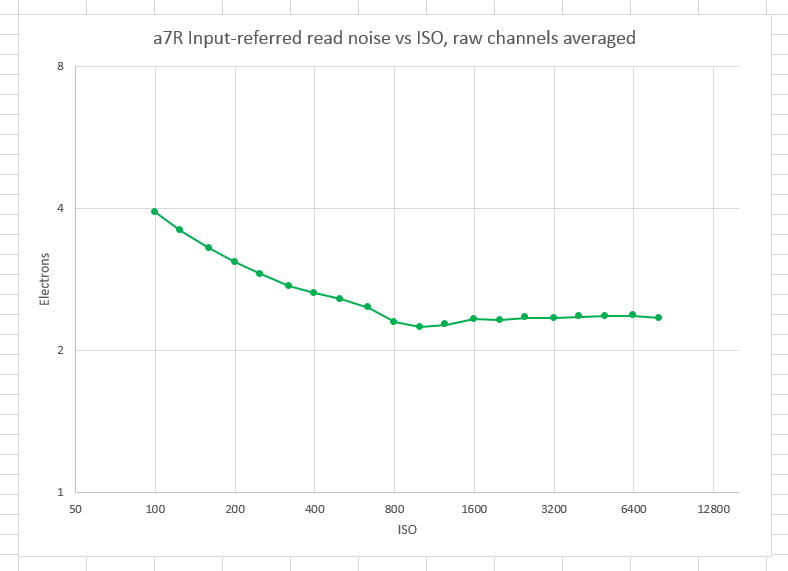
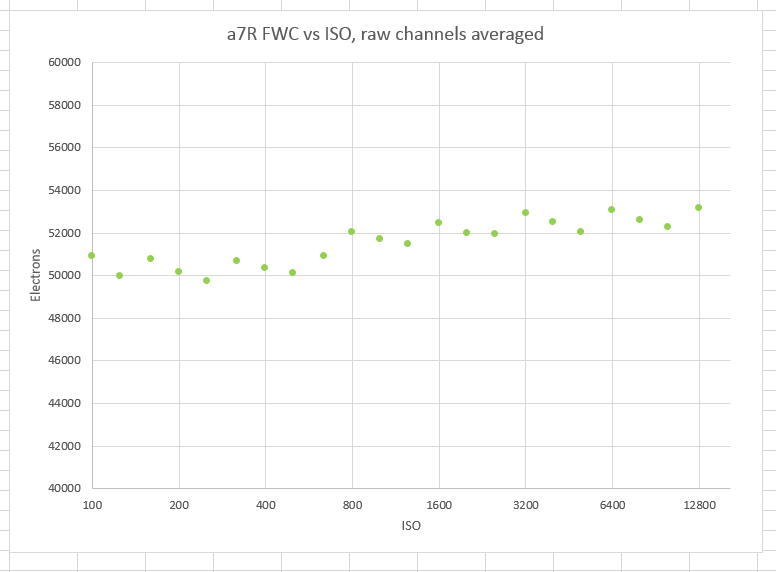
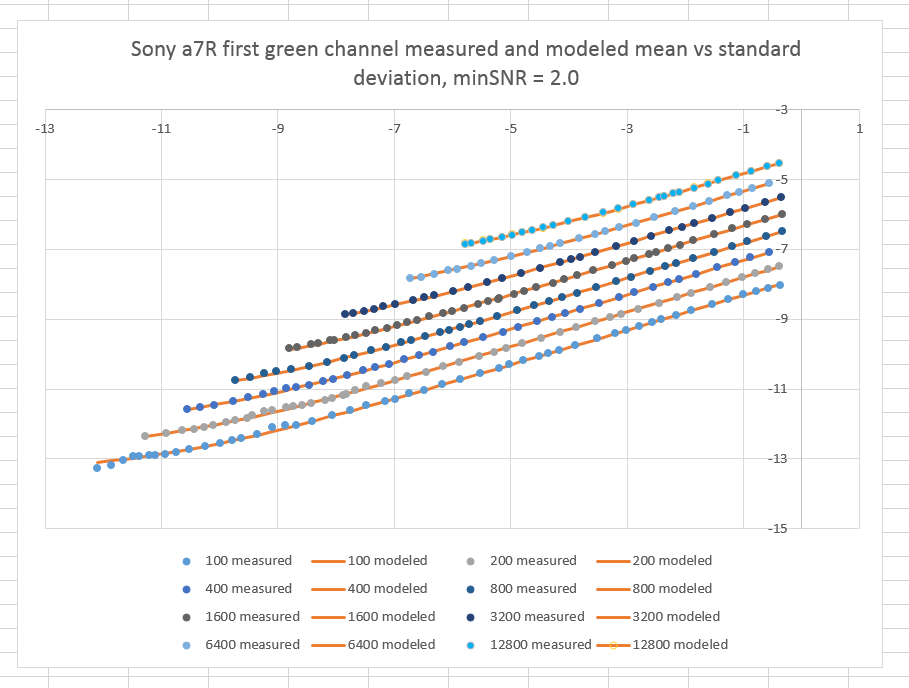
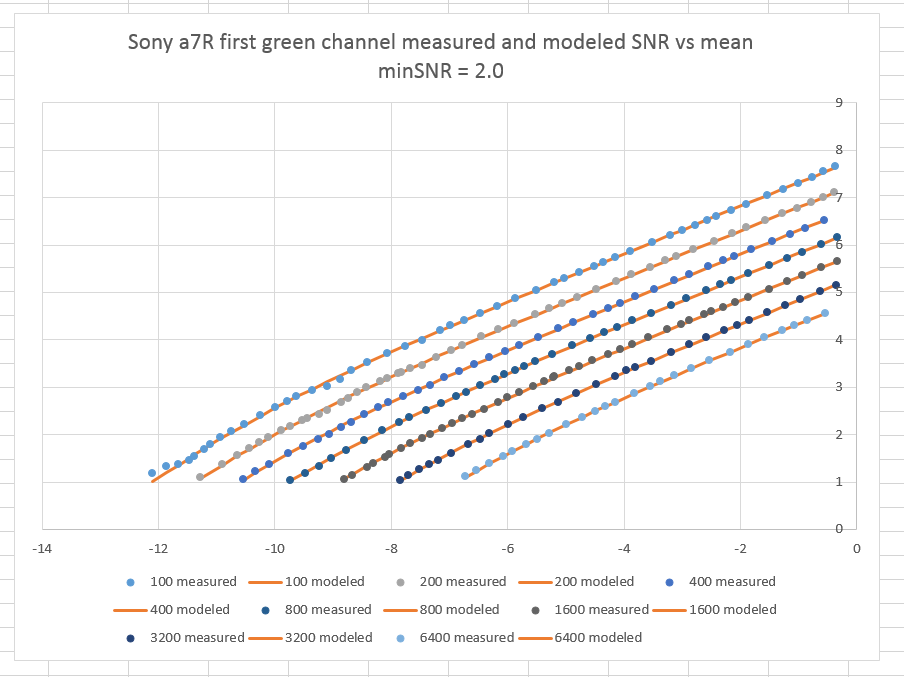
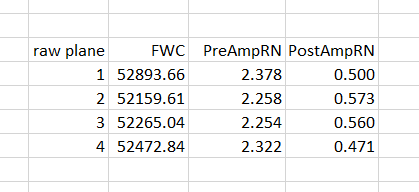
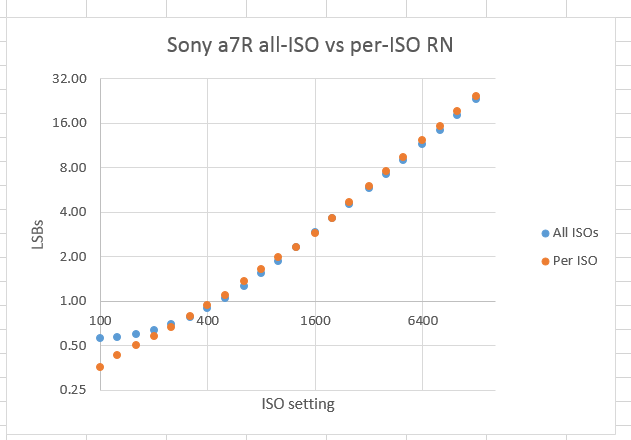
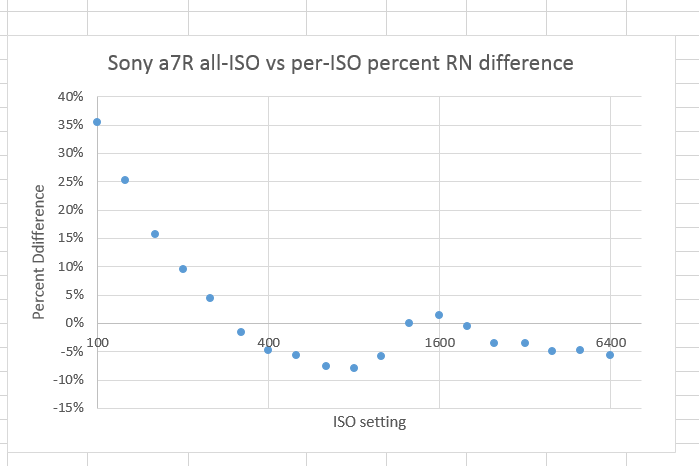
Leave a Reply